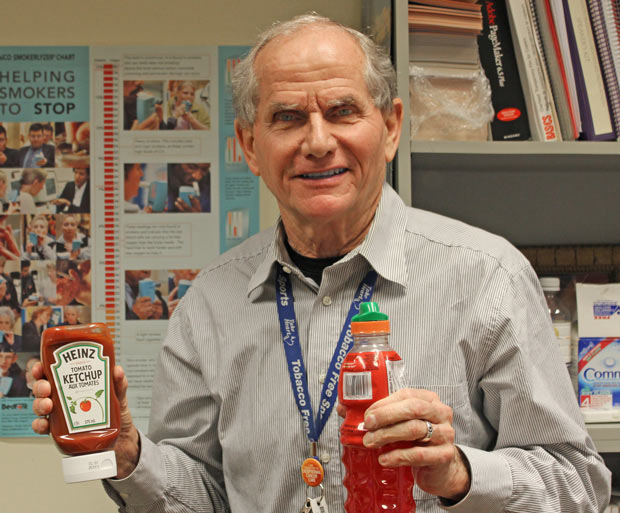

THUNDER BAY – Health – “Live, work, play… even better smoke-free.” That is the theme of this year’s National Non-Smoking Week (NNSW), which ran from January 20 to 26, 2013. As part of its NNSW celebrations, the cafeteria at Thunder Bay Regional Health Sciences Centre (TBRHSC) served cold turkey sandwiches. But quitting cold turkey is certainly not the only way to quit smoking and less than 5 % successful, according to Jim Morris, Quit Coach at the Cancer Centre’s Nicotine Dependence Centre.
Smoke-Free Solutions
“The most successful way to quit is to combine planning, approved medications and counselling,” says Morris, who will be joining representatives from Smokers’ Helpline, Cancer Care Ontario and Thunder Bay District Health Unit in the ‘Even Better Smoke-Free’ displays in the TBRHSC cafeteria on Wednesday, January 23, also known as Weedless Wednesday.
Weedless Wednesday has been a highlight of National Non-Smoking Week almost from the start, focusing media and public attention on the benefits of cessation and the community resources available to help smokers quit. The idea behind Weedless Wednesday is to promote a “one day at a time” approach to quitting smoking, a concept appealing to many smokers who may be discouraged at the thought of an entire week, or lifetime, without cigarettes, but who may be able to cope with one smoke-free day.
Morris recognizes how difficult it can be for people to cease tobacco use and has even coined nicotine the “King of Drugs.” “It’s an upper and a downer; it’s legal, available 24/7, instant, doesn’t intoxicate, not that expensive and, until recently, you could do it everywhere,” he says. “But, there’s nothing wrong with nicotine – it’s the delivery device called the cigarette that’s the problem.”
Morris advocates the ‘one day at a time’ approach to quitting and encourages smokers to try quitting for Weedless Wednesday and see how comfortable they are without smoking. “It gives people a chance to try to quit for one day,” says Morris. “The medical definition of a non-smoker is a person who has not smoked for 24 hours, so if you get through the day, you can call yourself a non-smoker.”
National Non-Smoking Week has been observed for more than 30 years. It is one of the longest running and most important events in Canada’s ongoing public health education efforts. Established in 1977 by the Canadian Council for Tobacco Control (CCTC), its goals are to educate Canadians about the dangers of smoking; prevent people who do not smoke from beginning to smoke and becoming addicted to tobacco; to help people quit smoking; promote the right of individuals to breathe air unpolluted by tobacco smoke; denormalize the tobacco industry, tobacco industry marketing practices, tobacco products, and tobacco use; and assist in the attainment of a smoke-free society in Canada






